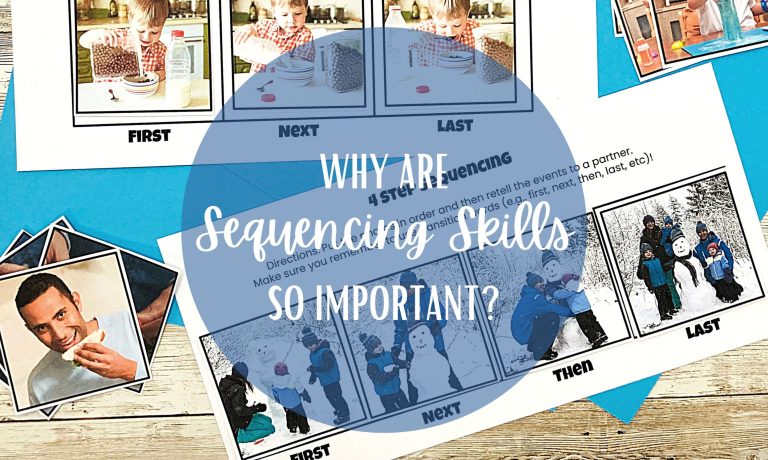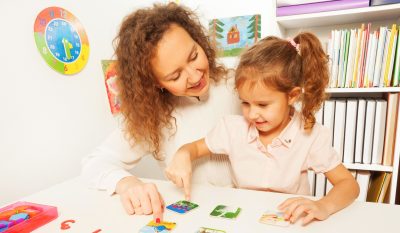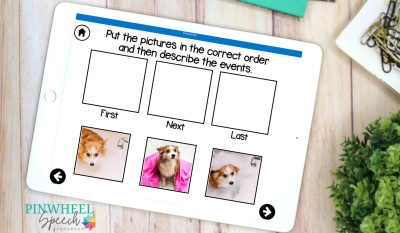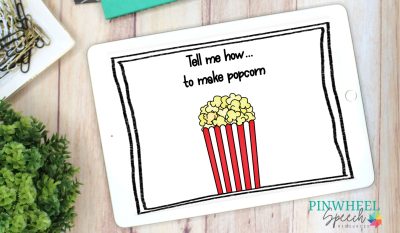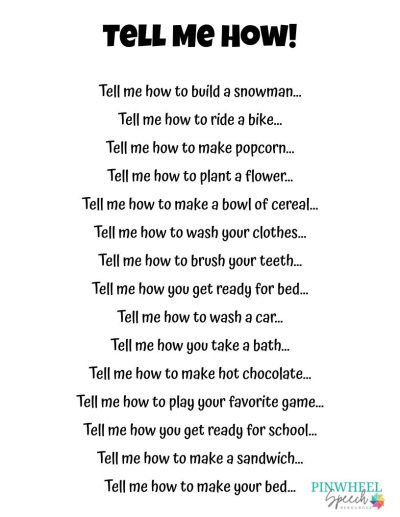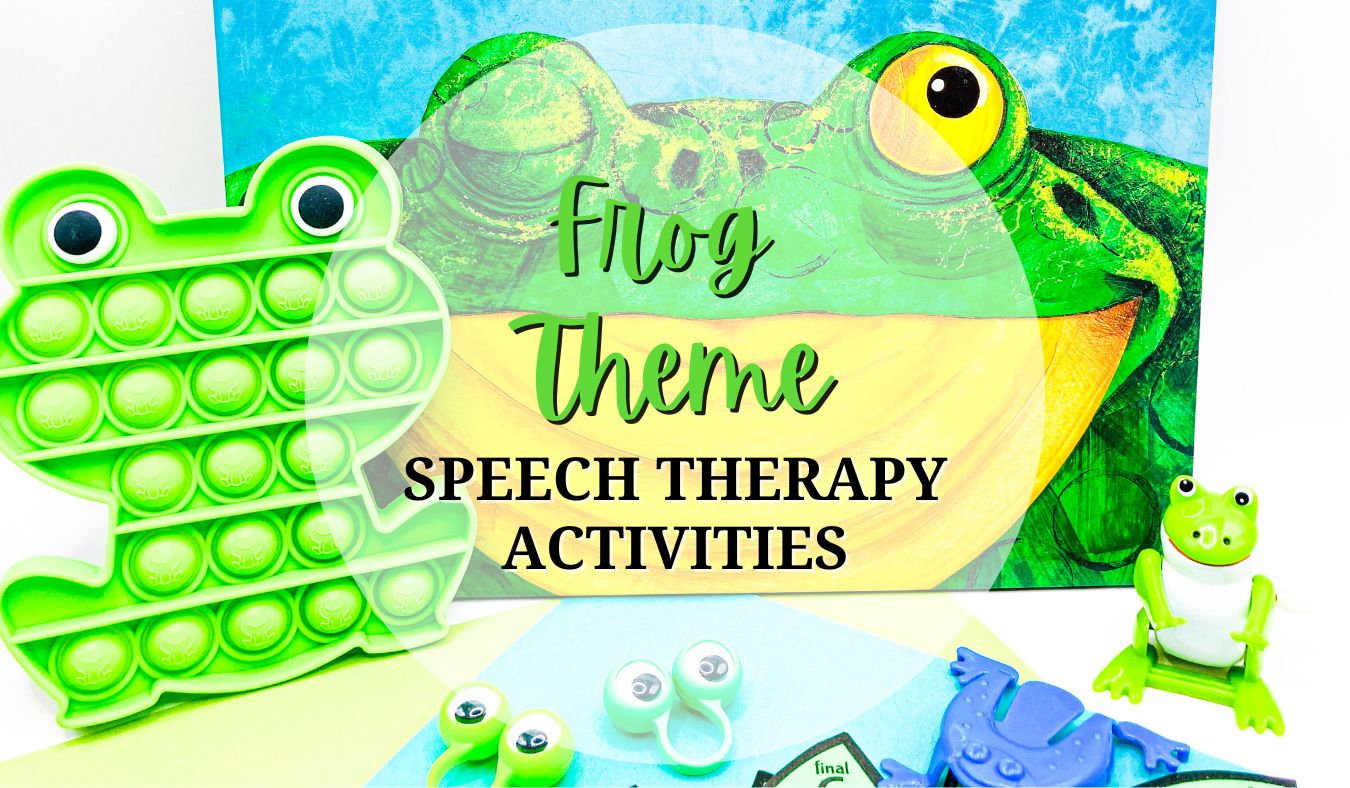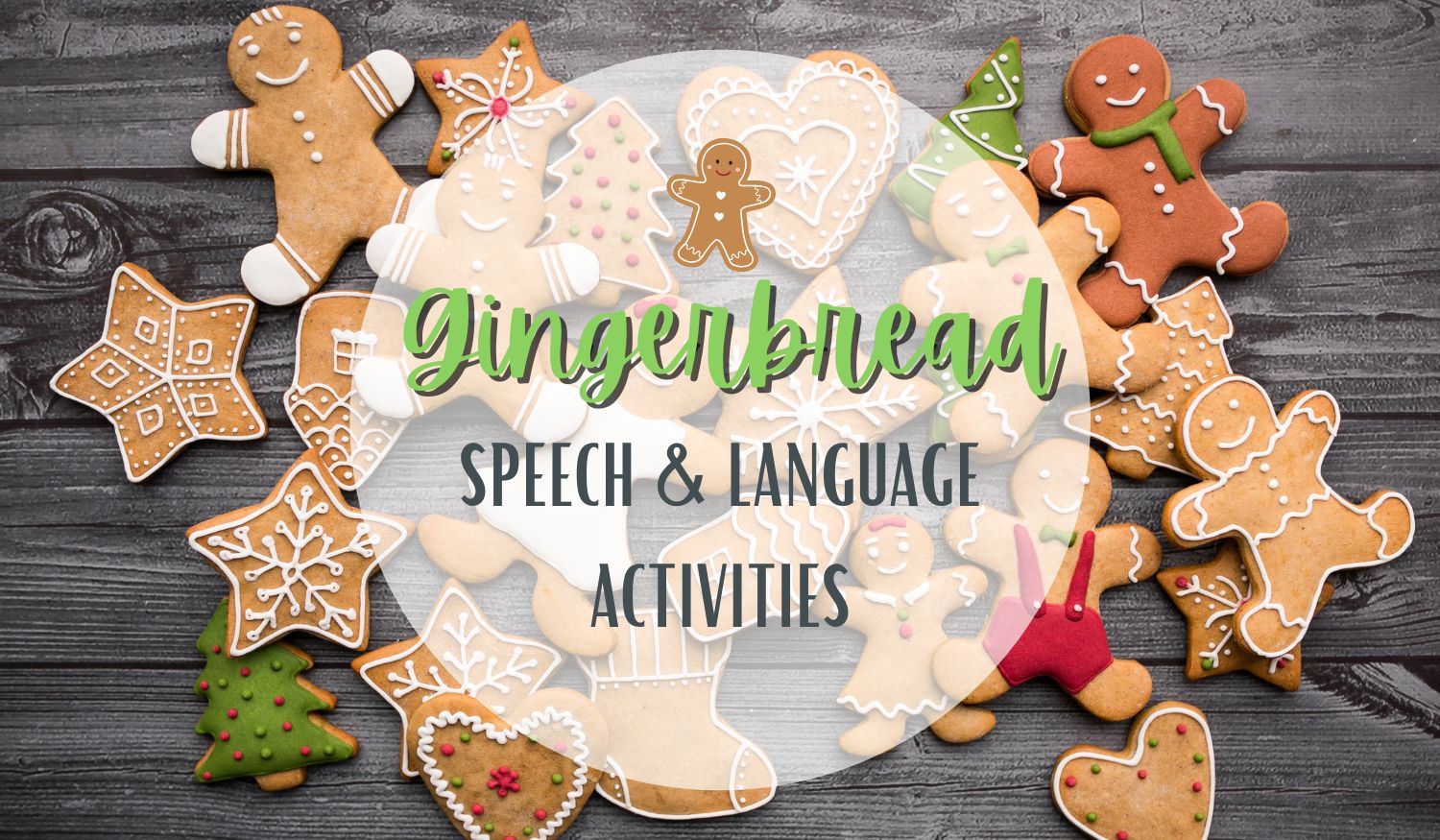Why Practice Sequencing?
Over the past 25 years as a speech language pathologist, I have worked in several different settings including private practice, pediatric clinic, preschool, and our neighborhood elementary school (About Me). One of the skills that seems to come up in every setting is sequencing. Sequencing is a foundational skill that requires you to arrange events, ideas, and actions in a logical order. The skill of sequencing helps students improve their language skills by organizing their thinking. By practicing sequencing skills, we can help our students improve their language skills, academic skills, executive functioning skills and social skills.
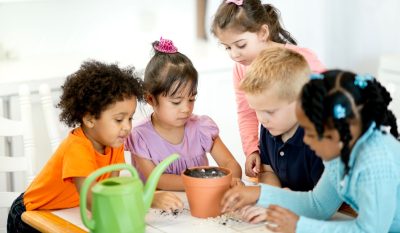
Sequential Concepts
Sequencing teaches important temporal or sequential concepts such as “first, then, last, before, and after”. These concepts continue to be important as students are taught to use “transition words” in order to organize their writing. Sequential skills are also an important aspect of giving and following directions. In the classroom setting, students are frequently expected to follow complex multi-step directions with embedded sequential concepts. For example, a teacher might say, “First pull out your math book, then turn to page 54 and complete the last problem on the page.” By focusing on sequential concepts in speech therapy, our students will better understand classroom directions.
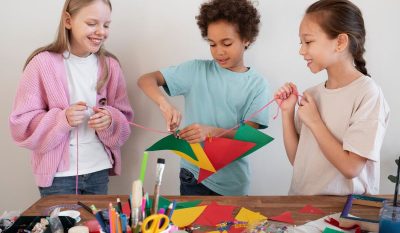
Cognitive Skills
By targeting sequencing skills, we are helping our students improve their cognitive skills and executive functioning skills. Executive functioning includes skills such as the ability to plan, organize, sequence, and manage your time. Many students with executive functioning issues are easily overwhelmed by school assignments because they don’t know where to start. Sequencing skills help them learn how to plan and organize the steps necessary to complete academic tasks. Sequencing requires children to use their memory and attention skills. It helps them to remember information in a particular order and to focus on details. Sequencing also helps children to identify the steps needed to complete a task, which is a key part of problem-solving. By practicing sequencing, children learn to break down complex tasks into smaller, more manageable steps.
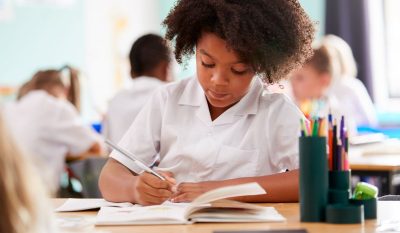
Narrative Language Skills
Narrative language refers to the ability to use language to tell (or retell) a story. We teach our youngest students to sequence and retell stories by including a beginning, middle, and end. When students retell a story or event, they are practicing their narrative language skills. Students with poor narrative language skills are at risk for academic difficulties throughout their school years. These skills are crucial for reading comprehension, writing, and building friendships. In order to understand a story or write a narrative, children need to be able to understand and use sequencing effectively.
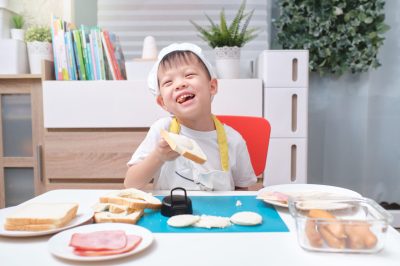
Life Skills
Sequencing skills are used in many aspects of daily life, such as following a recipe or getting dressed. By teaching children sequencing skills early on, we are helping them to develop important life skills that they will use throughout their lives. Here are some examples of how sequencing is used in daily life:
Following a recipe: Cooking or baking requires following a recipe with precise instructions in a specific order. If the steps are not followed correctly, the final product may not turn out as expected.
Getting dressed: Getting dressed requires a specific sequence of steps, such as putting on underwear first, followed by pants, then a shirt, and finally shoes.
Brushing teeth: Brushing teeth involves a specific sequence of steps, such as wetting the toothbrush, applying toothpaste, brushing each tooth, and then rinsing with water.
Doing laundry: Doing laundry involves several steps, such as sorting clothes, washing, drying, folding, and putting away.
Completing a task: Many tasks require a specific sequence of steps to be completed successfully. For example, cleaning a room involves picking up toys, putting away books, dusting, and vacuuming.
In summary, sequencing is used in many aspects of daily life, from completing simple tasks to more complex activities. By teaching children sequencing skills early on, we are helping them to develop important life skills that will enable them to become more independent and successful in the future.
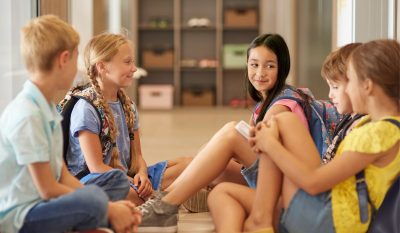
Social Skills
Sequencing skills can be used to develop important social skills in children, including following social rules, understanding social cues, developing empathy, solving social problems, and building friendships. Many social situations involve a sequence of steps, such as greeting someone, introducing oneself, and engaging in conversation.
Sequencing is also a foundational skill for telling stories. A personal narrative is a true story about something that happened in a person’s life (e.g,. telling a friend about their weekend). Many people don’t realize how important personal narratives are in building friendships. Students build relationships and friendship skills through personal narratives. Students with weak narrative skills may change topics, retell events out of order, skip important details, and go off on unrelated tangents. This can greatly impact their ability to maintain conversations and build friendships.
Ways to Practice Sequencing
Sequencing is one of my favorite skills to target because you can use stories, crafts, recipes, and even obstacle courses! Here are some of my favorite ways to practice sequencing skills:
- Routines – Schedules and regular routines can help children learn sequencing skills. Model sequential concepts as you brush your teeth together or get ready for school. Talk about what comes first, last, before, after, etc.
- Recipes – Make simple snacks or meals together and sequence the steps. Look for visual recipes or take photos of the steps.
- Events – Take photos during field trips or have parents bring in photos from family vacations. Sequence the events or make a book to practice retelling.
- Obstacle course – This is a fun activity for OT/SLP co-treat sessions. Set up an obstacle course and then sequence the actions.
- Sequencing activities – There are a variety of commercially available sequencing card sets. I especially love this sequencing set from Carson Dellosa because it uses real photos. You can also find printable and digital Sequencing Activities with photos in the Pinwheel Speech Store (see photo above). This activity starts with 2 step sequences and gradually moves up to 4 step sequences.
- Sequencing and Retelling stories – Literacy based instruction almost always includes sequencing and retelling the story. Simply read a book to your student and then have him retell the main events in the story. Use story props or refer to visuals in the book. You might also be interested in these Sequencing Stories in the Pinwheel speech store!
- Verbal sequencing – Eventually, you can practice sequencing tasks and events without visuals. Have your student tell you “how to brush your teeth” or “how to wash your hands”. Step by Step is an activity that is designed to practice procedural “How to” sequencing of common tasks. I have also included a FREE list of verbal sequencing tasks that you can download below!
- Sequencing in writing – Finally, students can practice sequencing skills in their writing by practicing narrative writing and “How to” writing (e.g. “How to make lemonade”). You can also use the “Tell me How” task cards (or the list below) as writing prompts for “How to” writing.
I hope this blog post inspired you to practice sequencing skills with your students. I would also love to hear some of your favorite ways to practice sequencing with your students. Please comment below!
